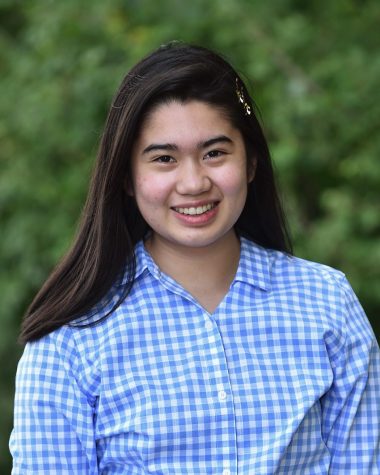Do you ever miss what a teacher is saying in class? Do you have questions while completing problem sets for math, but your teacher is not there to help? For SLS math teachers Coach Fred and Mr. Kress, a flipped classroom – learning through a video lesson at home – is the answer to some of the difficulties that come with the traditional classroom setting.
Currently, SLS offers three flipped math classes: Integrated Algebra I and all levels of Geometry taught by Coach Fred, and Honors Pre-Calculus taught by Mr. Kress.
Coach Fred creates videos that are 7-12 minutes long, and her students watch the videos at home while taking notes in a customized note packet. At the beginning of class, students are able to ask questions about the video. Then, with a partner or in a group of four, students complete problem sets.
“My main goal is to provide very basic content via an organized video. The video is set up the exact same as I would give a lesson in class, just shorter,” she explains.
Even before she was a teacher at St. Luke’s, Coach Fred had great success by flipping the classroom. She has been using the method for almost seven years now and wishes to continue.
Coach Fred’s enthusiasm and the apparent advantages to the teaching approach inspired Mr. Kress to use the flipped classroom method in one of his courses.
“The pros of the flipped classroom [are] that I can help a student who has a question while they are completing classwork. It is especially great for students who are very quiet and hesitant to ask questions because they can ask a question without the whole class knowing,” says Mr. Kress.
The digital library of videos benefits both the student and the teacher. For students, the compiled videos are helpful as review tools – they can rewind the videos to clear up their confusion and go back to old videos for exam preparation. Additionally, according to Mr. Kress, teachers also benefit from recording lessons because they can re-use the videos for next year’s students.
The goal of the flipped classroom is to help all types of learners. A student who is confident with the material can complete a lesson at their own pace. Since the flipped classroom is different from the norm, some students claim that in the beginning it takes a while to get used to the experience.
Marguerite DeMarco ‘21, who took Honors Geometry, shares, “It is a good concept, but it takes a lot of time to get used to, but nonetheless, I saw that I grew as a student.”
In hindsight, Marguerite recognizes that it was not the flipped classroom that was difficult to get used to, but rather the adjustment to a new and difficult course. In the beginning, the flipped classroom method was foreign to her – as was geometry – but it did not take long for her to see past the change.
Desmond Pratt ‘21, who was in Coach Fred’s Algebra II class last year (a course she no longer teaches), remembers appreciating the flipped classroom: “I liked it a lot. I thought it was really helpful for me.”
It is no surprise that many students enjoy the flipped classroom. Other academic departments, including the language department, are also using it. It will certainly be interesting to see if the concept of the flipped classroom begins to outweigh that of the traditional classroom.



